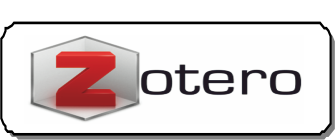Transformation of Education: Pattern of Integration of Science in Learning at UIN Antasari Banjarmasin
Abstract
This research aims to analyze the pattern of integrating knowledge in learning at UIN Antasari Banjarmasin. It has become a core issue at State Islamic Religious Higher Education Institutions (PTKIN), especially after the status change of several Islamic higher education institutions from STAIN or IAIN to UIN. This status change has had significant consequences on the shift in the fields of study at UIN, which were originally focused solely on Islamic sciences and have been expanded to include general sciences, both social and natural sciences. Many issues remain unresolved regarding the implementation of knowledge integration in the faculties at UIN Antasari, ranging from policies on knowledge integration in learning, the patterns of knowledge integration practiced by lecturers, and the extent to which lecturers respond to research on knowledge integration. The patterns of knowledge integration employed by some lecturers in the learning process include relating or presenting Quranic verses and Hadiths in the teaching of general subjects, and relating or presenting general knowledge in the teaching of Islamic studies. The integration models include informative and complementary approaches. The method used in this research is qualitative descriptive, which involves capturing the state of institutions, communities, and other entities based on the facts found. The research findings indicate that the pattern of knowledge integration involves lecturers relating Quranic verses and Hadiths in the teaching of general subjects, and integrating general knowledge in the teaching of Islamic studies, as well as using informative and complementary models.
References
Chasanah, Iflahathul, and Azmi Mustaqim. “Integrasi Teori Al-Jabiri Dan Sains: Analisis Model Pembelajaran IPA Materi Perkembangbiakan Tumbuhan.” Jurnal Tadris IPA Indonesia 3, no. 3 (November 30, 2023): 336–47. https://doi.org/10.21154/jtii.v3i3.2567.
Direktorat Jenderal Pendidikan Islam. “Keputusan Direktorat Jenderal Pendidikan Islam Nomor 2498 Tahun 2019 Tentang Pedoman Implementasi Integrasi Ilmu Di Perguruan Tinggi Keagamaan Islam,” n.d.
Hafiz, Muhammad, and Salminawati. “Implikasi Integrasi Ilmu Sains Dan Agama Pada Perkembangan Akhlak Peserta Didik.” Journal of Social Research 1, no. 7 (June 22, 2022): 617–25. https://doi.org/10.55324/josr.v1i7.125.
Hidayat, Fahri. “Pengembangan Paradigma Integrasi Ilmu: Harmonisasi Islam dan Sains dalam Pendidikan.” Jurnal Pendidikan Islam 4, no. 2 (December 1, 2015): 299. https://doi.org/10.14421/jpi.2015.42.299-318.
Larasati, Nur Azizah. “INTEGRASI ILMU PENGETAHUAN DAN ILMU AGAMA.” Jurnal Penelitian Agama 21, no. 1 (June 30, 2020): 113–24.
Masyitoh, Dewi. “AMIN ABDULLAH dan PARADIGMA INTEGRASI-INTERKONEKSI.” JSSH (Jurnal Sains Sosial dan Humaniora) 4, no. 1 (October 9, 2020): 81. https://doi.org/10.30595/jssh.v4i1.5973.
Mawarti, Tesa Fitria. “Tafsir Saintifik.” Jurnal Tafsere 10, no. 1 (June 1, 2022): 10–29. https://doi.org/10.24252/jt.v10i1.35547.
Musfah, Jejen, and Budi Mulia. “ANALISIS STANDAR NASIONAL PENDIDIKAN TINGGI: STUDI KASUS DI UIN ANTASARI BANJARMASIN.” Al-Tanzim: Jurnal Manajemen Pendidikan Islam 4, no. 2 (September 28, 2020): 224–35. https://doi.org/10.33650/al-tanzim.v4i2.1052.
“PMA Nomor 29 Tahun 2017 Tentang Statuta Universitas Islam Negeri Antasari - IDR UIN Antasari Banjarmasin.” Accessed July 16, 2024. https://idr.uin-antasari.ac.id/9404/.
Ridwan, Irwan Muhammad. “HARMONI, DISHARMONI, DAN INTEGRASI ANTARA SAINS DAN AGAMA.” Jurnal Filsafat Indonesia 3, no. 1 (April 30, 2020): 8–13. https://doi.org/10.23887/jfi.v3i1.22472.
Rif’ah, Naila, and M. Husnaini. “Upaya Inovatif Dosen Menuju Harmoni Ilmu: Membangun Iklim Integrasi Ilmu Di Fakultas Ilmu Agama Islam Universitas Islam Indonesia: Upaya Inovatif Dosen Menuju Harmoni Ilmu: Membangun Iklim Integrasi Ilmu Di Fakultas Ilmu Agama Islam Universitas Islam Indonesia.” At-Thullab : Jurnal Mahasiswa Studi Islam 6, no. 1 (May 26, 2024): 1510–27. https://doi.org/10.20885/tullab.vol6.iss1.art4.
Setyowati, Nurwastuti. “Interkoneksi Agama, Sosial Dan Budaya Dalam Pendidikan Islam.” Journal of Islamic Education and Innovation, 2022, 56–63. https://doi.org/10.26555/jiei.v3i1.6086.
Suprapto, Suprapto, and Sumarni Sumarni. “Implementasi Integrasi Ilmu Di PTKI: Integrasi Dalam Tridarma Perguruan Tinggi.” EDUKASI: Jurnal Penelitian Pendidikan Agama Dan Keagamaan 20, no. 2 (October 14, 2022): 119–32. https://doi.org/10.32729/edukasi.v20i2.1246.
Supriani, Yuli, Nanat Fatah Natsir, and Erni Haryanti. “Paradigma Keilmuan Yang Melandasi Proses Transformasi Universitas Islam Negeri Walisongo Semarang | JIIP - Jurnal Ilmiah Ilmu Pendidikan.” Accessed July 16, 2024. https://jiip.stkipyapisdompu.ac.id/jiip/index.php/JIIP/article/view/335.
Tim Penyusun. “Filosofi Keilmuan UIN Antasari.” Antasari Press, 2020.
———. “Keputusan Dirjen, Pendis No. 2498,.” Jakarta: Kementerian Agama Republik Indonesia, 2019.
———. Pedoman Implementasi Integrasi Ilmu Di Perguruan Tinggi Keagamaan Islam. Jakarta: Direktorat Pendidikan Tinggi Keagamaan Islam Direktorat Jenderal Pendidikan Islam Kementerian Agama Republik Indonesia, 2019.
Wahyudi, Mochamad, Rachmat Adi Purnama, Lovinta Happy Atrinawati, and Dennis Gunawan. “Mengeksplorasi Dampak Teknologi Pembelajaran Aktif Di Institusi Pendidikan Kejuruan Menengah.” Jurnal MENTARI: Manajemen, Pendidikan Dan Teknologi Informasi 2, no. 2 (February 11, 2024). https://doi.org/10.33050/mentari.v2i2.458.
Copyright (c) 2024 Mahyuddin Barni, Hairul Hudaya

This work is licensed under a Creative Commons Attribution-ShareAlike 4.0 International License.
Please find the rights and licenses in SYAMIL Jurnal Pendidikan Agama Islam (Journal of Islamic Education). By submitting the article/manuscript of the article, the author(s) agree with this policy. No specific document sign-off is required.
1. License
The non-commercial use of the article will be governed by the Creative Commons Attribution license as currently displayed on Creative Commons Attribution-ShareAlike 4.0 International License.
2. Author(s)' Warranties
The author warrants that the article is original, written by stated author(s), has not been published before, contains no unlawful statements, does not infringe the rights of others, is subject to copyright that is vested exclusively in the author and free of any third party rights, and that any necessary written permissions to quote from other sources have been obtained by the author(s).
3. User/Public Rights
SYAMIL spirit is to disseminate articles published are as free as possible. Under the Creative Commons license, SYAMIL permits users to copy, distribute, display, and perform the work for non-commercial purposes only. Users will also need to attribute authors and Register on distributing works in the journal and other media of publications. Unless otherwise stated, the authors are public entities as soon as their articles got published.
4. Rights of Authors
Authors retain all their rights to the published works, such as (but not limited to) the following rights;
Copyright and other proprietary rights relating to the article, such as patent rights,
The right to use the substance of the article in own future works, including lectures and books,
The right to reproduce the article for own purposes,
The right to self-archive the article (please read out deposit policy),
The right to enter into separate, additional contractual arrangements for the non-exclusive distribution of the article's published version (e.g., post it to an institutional repository or publish it in a book), with an acknowledgment of its initial publication in this journal (SYAMIL Jurnal Pendidikan Agama Islam (Journal of Islamic Education)).
5. Co-Authorship
If the article was jointly prepared by more than one author, any authors submitting the manuscript warrants that he/she has been authorized by all co-authors to be agreed on this copyright and license notice (agreement) on their behalf, and agrees to inform his/her co-authors of the terms of this policy. SYAMIL will not be held liable for anything that may arise due to the author(s) internal dispute. SYAMIL will only communicate with the corresponding author.
6. Royalties
Being an open accessed journal and disseminating articles for free under the Creative Commons license term mentioned, author(s) aware that SYAMIL entitles the author(s) to no royalties or other fees.
7. Miscellaneous
SYAMIL will publish the article (or have it published) in the journal if the article’s editorial process is successfully completed. SYAMIL editors may modify the article to a style of punctuation, spelling, capitalization, referencing and usage that deems appropriate. The author acknowledges that the article may be published so that it will be publicly accessible and such access will be free of charge for the readers as mentioned in point 3.












